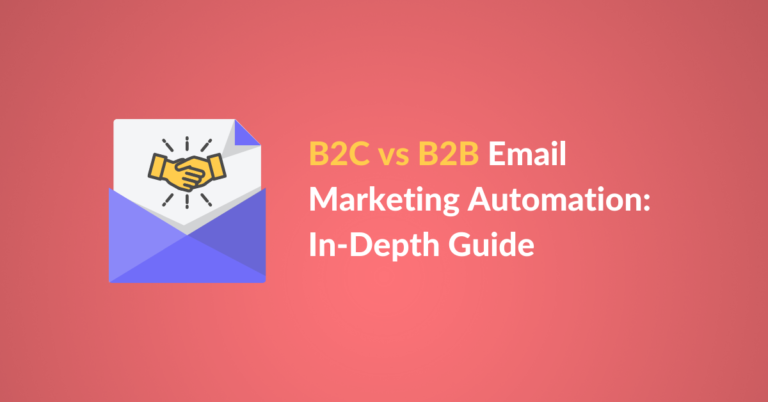B2B and B2C email automation used to be only for medium or large businesses. Today, increased competition in the field extends small businesses’ ability to take advantage of these once monolithic tools.
Email automation tools are getting popular and more affordable. Cheaper options mean smaller companies with smaller marketing teams can spend less on human resources and gain access to more leads than ever before.
B2B (business-to-business) and B2C or (business-to-consumer) have different needs regarding marketing in general.
What is B2B Email Automation?
Business-to-business typically means the relationship between your company and a large team representing the client’s products, services, and brand.
Email automation is one of the most lucrative channels in digital marketing. It’s even more lucrative for business-to-business.
Business-to-business customers are more restricted to when they can buy and from where they get their information.
What is B2C Email Automation?
Business-to-consumer almost always deals directly with the individual purchasing your product or service. It can be more easily customized with personas and tailored to the demographics and type of person buying.
Marketing to individuals has a wide variety of different channels, including social media, and includes a more diverse range of timing when customers are receptive to your products and services.
How does Email Automation Work?
In general, email automation works with three essential components: Triggers, Rules, and Content.
Triggers are where automation sends emails based on specific parameters, such as the time of day or a lead qualifying themselves for your marketing material by clicking subscribe to your email list.
Rules are ways to segment your customers. Segmentation is much more critical with business customers. That’s because they usually have a slower and more rigorous process for decision-making for procurement departments.
The content is ultimately the communication that your customer sees. Depending on your customer’s position in the sales and marketing funnels, you will want to send them different content.
Today’s email marketing is highly competitive, so customers are much more opposed to content that is not well suited for them. Using AI and advanced analytics, you can create much more personalized content for your customer.
A similarity between B2B and B2C is that with more refinement of the user experience (UX), automation typically yields higher revenues and higher conversion rates.
Email marketing of the past ten years has focused on volume more than quality. Today, quality is a more crucial factor.
By designing the user experience, you can follow a customer’s journey through the sales and marketing funnel. With email automation, this process can become much more elegant.
Although you can achieve the same customization level with individualized marketing and sales, the goal is to reduce your marketing budget while increasing high-quality leads to your business.
With advanced analytics data and automation, you can create an evidence-based marketing approach. Analytics uses advanced mathematical models to make decisions, and if you use common sense and imagination, these decisions can be more human, relatable, and better sell your product.
The Life of the Marketer is Changing
The life of marketers has evolved over the last 10 to 20 years. In the past, marketers could focus more on understanding the art of the perfect ad. A splash of psychology, a lot of writing experience, and talent for the art were required.
In the late 1990s, the rise of email marketing came to the forefront. The ability to send mass emails was novel, and machine learning or advanced analytics did not exist.
All customers would receive the same email, and things were great. Marketers looked a lot like IT professionals and less like the artists of the mid-20th century.
In the last 5 to 10 years, marketers have changed yet again. Now small marketing teams of 2 to 5 people can manage medium-sized companies’ marketing departments. However, quality has not decreased.
With more and more automation companies coming onto the market every day, it’s more manageable to reduce resources, increase productivity, and increase quality.
You don’t have to have an enterprise-level business to gain access to these automation tools, as many are affordable to the average individual.
Marketers today have to understand all of these tools and learn how to curate them into their personal marketing software stack.
B2B and B2C are Incredibly Different
Digital marketing professionals often use the same tools regardless of whether they’re B2B or B2C marketers. But how they use those tools differs significantly.
For example, B2B marketers for small businesses may care very little about social media marketing channels. They might focus entirely on email Outreach instead.
B2B marketers may care much more about automation software’s segmentation capabilities and less about the visual appeal or social media integrations.
B2B marketers must thoroughly study content personalization because of the more rigorous demands of the business customer.
Next, we will talk about each of the following topics and get in-depth about the differences between B2C and B2B email automation:
- Lead Generation Channels
- Segmentation
- Triggers, Rules, and Content
- Time to Send Optimization
- Personalization
Lead Generation Channels
Many different lead generation channels exist for marketing automation. The purpose of digital marketing is to drive revenue to your business by sourcing leads, exposing them to your products and services, and eventually getting them to buy.
Depending on the channel source that your lead comes from, their level of interest may be higher or lower.
Customers who find your business from billboards or website ads are much less likely to purchase than customers who type your URL directly or clicked on your email CTA (Call-to-Action).
To some degree, this is because if an email is being sent to a customer, they have already been evaluated somewhere. Suppose they click the link to sign up for your newsletter.
On the other hand, they may have put one of your products in their cart to buy.
Depending on the lead generation channel, we can determine how interested a customer is using analytics and automation rules.
The customer’s interest level correlates with how much marketing effort you need to get that customer to buy.
By prioritizing the channel by the number of resources required to convert customers, you can effectively lower your marketing budget and increase your revenues.
For business-to-consumer email marketing, the customer’s interest to buy is more steady across different lead generation channels.
For this reason, it makes sense for marketers to spread their marketing budget across many options. Some of these outbound channels are email, content marketing, social media, search engine optimization, and paid ads like PPC (pay per click).
For business-to-business, marketers should still diversify their marketing budget partially but should focus mostly on email marketing.
Search engine optimization and paid ads are good ways to test your marketing materials, but expensive and low ROI to conduct long-term.
With email and other options, you can conduct A/B testing and Target Audience Analysis (TAA). TAA is easiest when you have rich analytics data, primarily from PPC on search engines and social media.

Before starting an email marketing campaign, it’s essential to have a good idea of conversion. Conversion is merely getting your customer to perform an action.
This is why the button at the end of the email is called a “call to action” (CTA). When the customer does this action, they are qualifying for a micro-conversion.
In marketing, we call micro-conversions actions without purchases, but the customer has made a measurable decision in that direction. You can then classify them as “ marketing qualified” customers and trigger specialized communications in the future.
Those emails can be more advanced than a cold-email where customers are assumed to have little to no awareness about your product.
When you send somebody an email, you want them to click on your CTA. Usually, the CTA goes to the website. That website can be a landing page or a content piece, among other conversion tools (see infographic).
Without landing page optimization or content marketing, email marketing is not very useful.
Emails with excellent micro-conversion capabilities are useless on their own because you also need to have great content on your website to inform further and engage your customer.
Only then you can send them directly to the product page to buy.
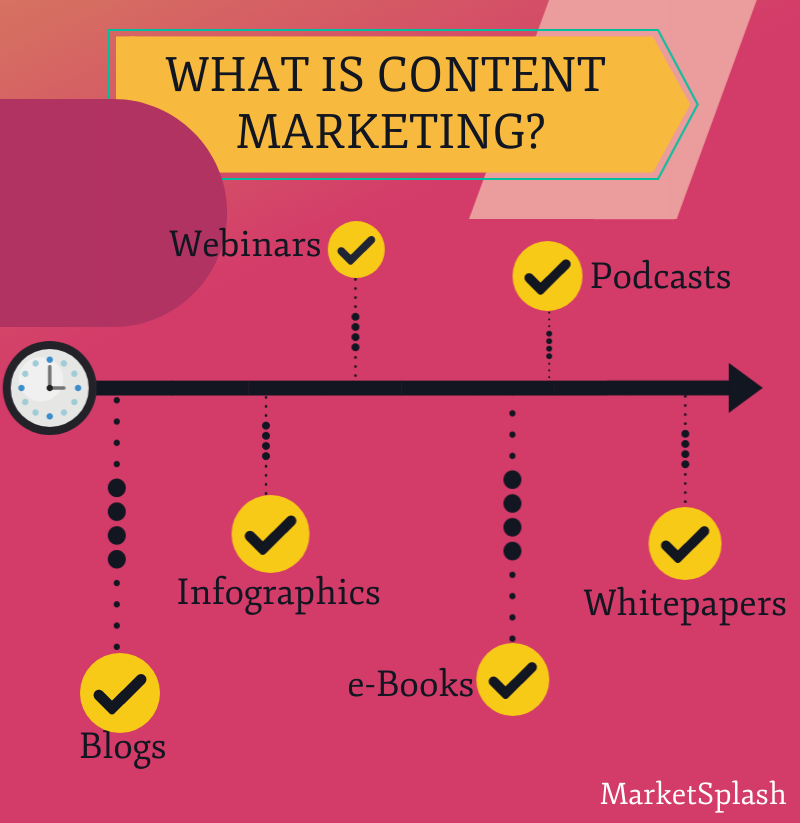
In the B2C industry, there are usually fewer steps that the customer needs to take, from clicking on the email link to purchasing your product or service.
Clicking through from an email to landing page to product page is the consumer’s entire sales funnel.
In this funnel, consumers have three journey micro-conversions that occur before purchase: becoming aware of your product, looking at the product page, and finally purchasing your product and becoming a customer.
B2B clients have many more steps in the purchasing process. Business clients who are aware of your product may not be ready to look at the product page.
The good news is that you can use many different tools and techniques to advance them and understand how many additional steps there should be for particular product categories.
Segmentation: Your Most Powerful Tool
For the B2C marketers out there, you might start with three different stages in your marketing and sales funnel. As we just discussed, you can further divide the three funnel stages by initial inbound channel or “Source Channel.”

We know that depending on the channel, the interest varies dramatically. With this information tied into your automation, you can segment your leads.
When sending emails to each segment, you can include more well-matched content for the segment.
First, you need analytics to perform this type of segmentation. Furthermore, you need to connect your website analytics to your segmentation software. If you use a social media management platform, you’re going to need to connect that to your analytics system too.
Analytics are collected from the social media platform and additionally from your email platform. T
o fully qualify each lead, you’re also going to need the analytics from your website, which uses cookies, traceable links, and javascript events to track the customer’s activity on your site.
For B2B marketers, The Source Channel might not be as crucial because you might be focusing directly on B2B email marketing, not on other channels. Still, your channels can help to segment your clients.
If you have multiple channels, you’ll need to factor in that some channels have a much lower lead purchase intent. On these channels, you might have a higher volume but lower overall revenue.

It’s always imperative to conduct target audience analysis to determine which channels to use.
Although an outbound channel in itself, using paid promotions is used for experimentation and helps you create rules with your drip email campaigns.
Because paid advertisements usually have powerful analytics capabilities, such as the ability to segment by demographics or geography, you can learn a lot about your target audience by running some experimental ads.
CVR: the Silver Bullet of Analytics?
When you start looking at analytics as ways to trigger your content delivery, segment your customers, or vary your content, you want to understand what analytics you are using. You may have heard a lot about conversion rates (CVRs).
If you take nothing else away from this, you should know that conversion rates are not the whole story for your business; however, they are useful for email optimization.
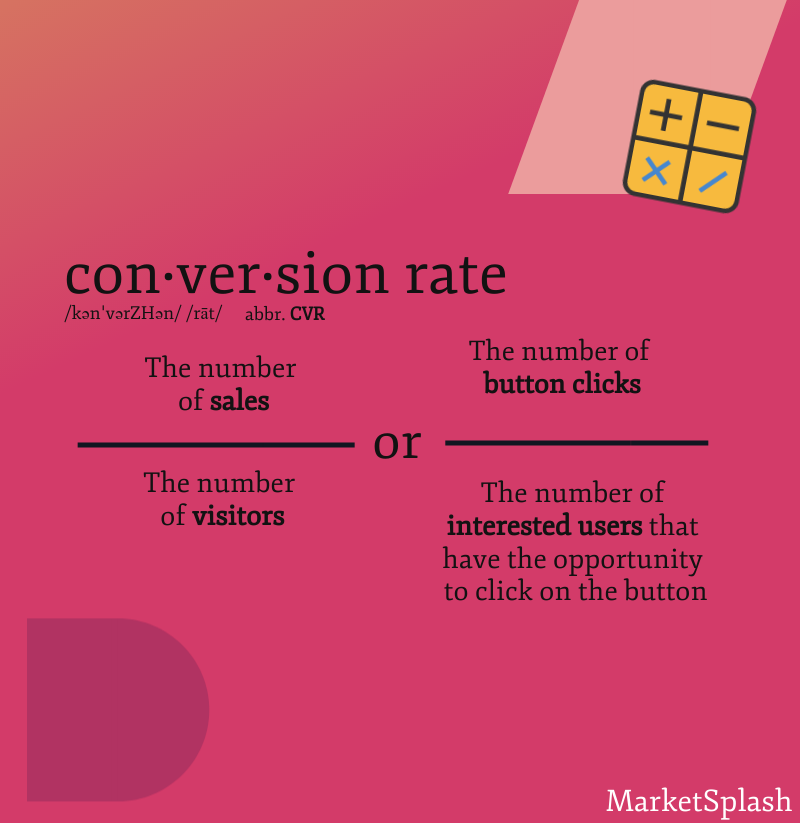
CVRs are just ratios that help you fundamentally to judge the performance of an action the customer takes.
Conversion rates can increase and decrease, sometimes even dramatically, without affecting the bottom line for your business.
This volatility in CVR is why you have to consider other analytics as well in automation processes.
Because overall revenues are usually the goal, take a look at the sale value, the amount spent on marketing, and the lead volume that marketing material generates.
By understanding your marketing channels’ profit and the profit margin, you have a much higher possibility of optimizing your content.
We’re saying that maximizing conversion rates just for conversion rates’ sake doesn’t make any sense. Brainstorm and develop your own complex rules that fit your target audience, and you’ll have much better marketing automation.
The idea here is to automate in the end. This process is not very difficult for an individual customer and a human being to think logically. But for automation, you need to determine the core rules behind your customers’ behavior in a way a computer can understand.
Conversion rate spread by industry (Unbounce)
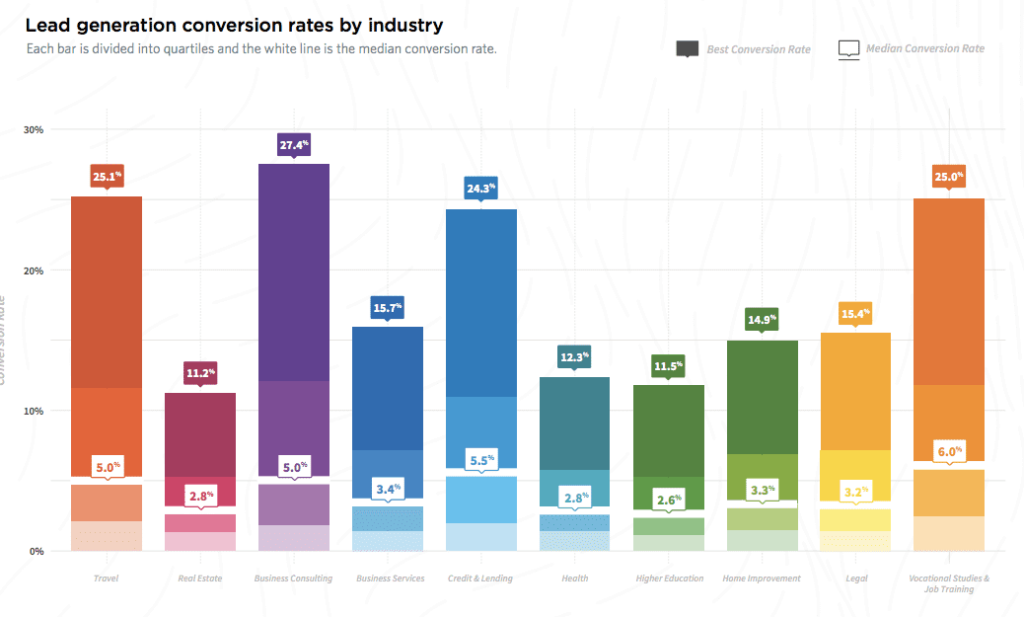
For some specific conditions, the conversion rate is beneficial. Suppose the micro-conversion action is clicking through to the product page.
If your conversion instrument is a landing page or an email, its CVR is a single analytics parameter that you can optimize for.
You need to do one of two things for other conversion instruments (like chatbots or sponsored clicks).
Either break down your sales process into more micro-conversion steps, measure the conversion rates for those, or use CVR for A/B testing your content.
A micro-conversion can also consist of filling out a form and joining a mailing list. Sometimes conversion rates are much more useful when you segment them into smaller tasks.
Things like forms can be highly optimized, and there are automation and tools available for that. Using conversion rates to judge one form over another is a great way to optimize forms.
When you’re calculating conversion rates for emails, often, the terminology changes slightly.
For particular micro-conversion instruments, they may be called a different thing. Emails, for example, refer to CTR or click-through-rate.
Email CTR is usually a higher percentage than CVR because not many customers who click through to your website actually buy. It’s much easier for customers to hear you out than actually spend some money.
When your customers convert, they are proceeding through your sales funnel. An example of a digital marketing sales funnel is as follows:
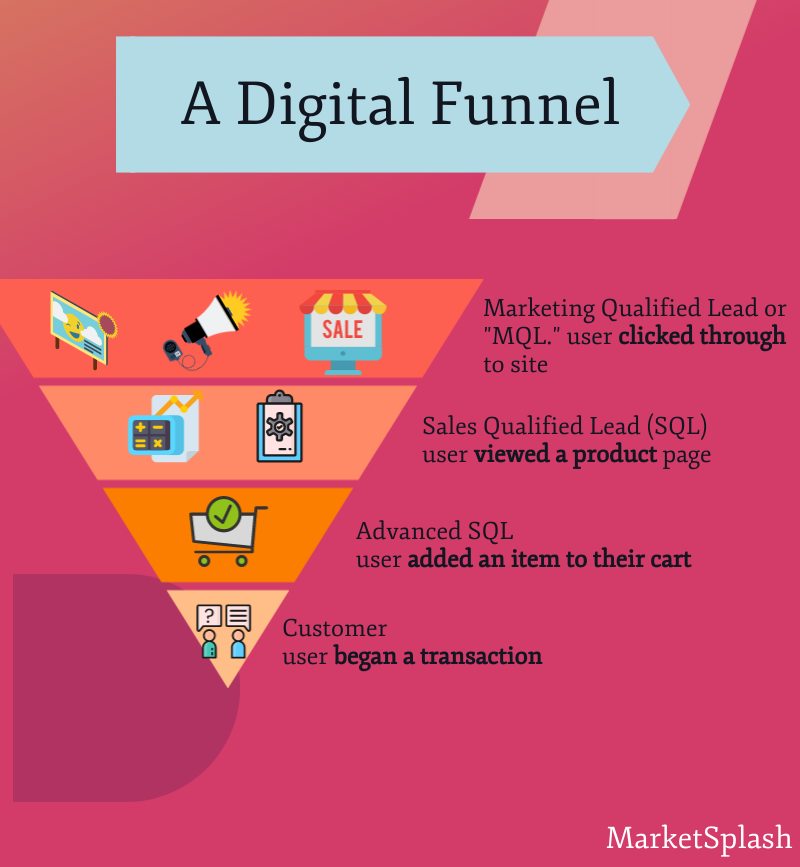
4 B2B Lead Segmentation Tactics
The digital marketing funnel that you see above is a slightly more advanced B2C marketing funnel. When segmenting with B2B, you need to have a better understanding of your target audience. Most of the segmentation that you will do with B2B is based on audience segmentation.
Audience segmentation is a complicated process. It might be one of the most challenging methods of building a business in general. For this reason, you need more than just one person.
B2B procurement and purchasing departments have entire teams dedicated to research. You should have at least a small team dedicated to target audience analysis and the lead segmentation that follows.
There are many ways in the digital marketing world to conduct TAA. Probably the easiest way is to start looking at your potential competitors. If anyone else in your market niche is running digital marketing, they likely leave enough of a digital trail for you to understand the scale and composition of your target audience.
4 different ways to start segmenting your potential business customers are:
- Keyword research
- Niche community research
- Ad-analytics
- On-page analytics
At this stage, you’re trying to gather as much information as possible, so use all four tactics to brainstorm more with your team.
1. Keyword research
With keyword research, you can leverage large databases of search engine result pages (SERP) to understand what people are searching for.
Start looking for things relating to your products and services, and chances are you’ll find your competitors. Search for how your competitors conduct their marketing to their target audience.
Your competitor’s target audience likely overlaps with yours. By looking at their marketing materials, you can understand a lot about the audience’s difficulty and volume.
Difficulty a term commonly used in search engine optimization (SEO). It’s related to how popular the topic is, but it’s also related to supply and demand. Higher difficulty keywords mean a higher supply to demand ratio.
Search volume is an indicator of popularity and represents the overall demand for a topic, market, product, or service. To optimize your email marketing, you should try to find low-difficulty keywords with moderate volume.
Naturally, you’ll see that these relate to customer’s burning questions, pain points, or unique perspectives that will give you lots of ammunition for interesting email reads.
2. Niche Community Research
After watching your competitors, the next best way to understand your target audience is by talking to them.
Niche community research is a way to stay in contact with your target audience regularly. Understand their core issues, their pain points, the drawbacks that they perceive in the market, and their general demographics.
Further segmentation ideas can be found by analyzing their ideology as well. After segmenting by demographics, you may still be able to segment your customers into significantly different schools of thought.
These schools of thought are called psychographic segmentations. Once you understand them, you can send them customized email content and achieve better resonating performance with each segment.
With B2C target audience analysis, your life is a little bit easier than a B2B marketer because your prospects are likely more active on social media, posting on forums about their cares and grievances.
With B2B, you’re going to have to try harder. Thankfully, with professional social media like LinkedIn and companies often hosting unique product support forums, you can still find segmentation ideas in these niche communities.
3. Ad Analytics
PPC, or pay per click, is an excellent source for analytics information. This is where we start to get into the power of automation. Because PPC can target particular demographics, geographies, or conditional triggers, PPC has the potential to create massive quantities of valuable analytics data.
When customers click on a paid ad, whether on social media or in search engines, you can gain rich information about that customer.
You can use these analytics to tie directly into your email marketing tools. Location data, device data, demographics, and more can trigger specific landing pages. The performance of your ads tells you vital information about how to segment your email marketing.
4. On-page Analytics
On-page analytics are the last chunks of information that you can use to drive your automation. Email analytics are a type of on-page analytics that are programmed into the email’s HTML.
Emails can have interactive elements that record engagement data. They also can have traceable links so that when somebody clicks into your website, you know that they have arrived via that particular email.
On-page analytics then track the user once they get to your website. From how much time they spend on each page, whether they look at your product pages or enter any additional information, the on-page analytics are what you can use to qualify your leads fully.
Adding all of this information together is called “lead scoring” and is accomplished by many email marketing software.
If your leads click on a content page where they can learn more about your product, you can understand their engagement and interest. You can include videos on your landing pages and video Analytics.
Because videos track how long they have been played for, you can get highly granular information about the client’s interest level.
These highly granular analytics allow you to make almost infinite segmentation levels based on the interest level on specific content. Connect your email marketing tools to this data, and create triggers when leads show the optimal amount of interest.
Personas: Borrowing Segmentation Ideas from UX Philosophy
Further segmentation can be done by conceptualizing personas. Personas are specific hypothetical customers, which have different experiences explicitly designed for them.
B2B email marketers often try to create personas and choose the triggers, rolls, and content appropriate for those personas.
One problem with personas is that you can’t conceptualize a persona until you have some analytics information. Personas rely on relatively large analytics information databases to classify and define the highly unique type of customer.
Precise and very distinguished personas have the highest conversion potentials. Many companies use spending amounts to create these personas.
For example, a VIP persona can be defined for customers that spend beyond a certain threshold. Email content can then be triggered, themed specifically for VIP customers.
When you have enough data for persona segmentation, you have a lot of data on your prospective customers. You need to use this information wisely.
Customizing your persona too specifically highlights your Big Data collection practices that most customers would rather not know about.
Sometimes, it’s best to limit your persona customization a little bit. Give the customer a sense of privacy, even if they have unwittingly shared more information about themselves than they may realize.
Suppose that your product or service is marketed to B2B and B2C together. In this case, one segmentation level is the question: B2B or B2C? Either your customer is an individual or a business.
Businesses have different levels of personas. In general, B2C personas are much more specific than B2B. This is because you’re usually marketing to a team with B2B, whereas B2C is almost always to a person.
Timing
Every email automation system has rules which allow you to dictate send-time optimization. Timing optimization is a fundamental concept in all digital marketing.
If you are not using timing optimization, you should. One thing in common between B2C and B2B is that send-time optimization needs to happen in any case.
With B2C, send-time optimization is a little bit more complicated. For example, B2C communications have windows on Saturday at 1 pm and all days between 8 p.m. to midnight.
These times correlate with when people are looking at their phones before bed or generally have more free time.
In terms of free time, this automation process works the same way with B2B, but you need to constrain your outreach to the workweek.
Ask yourself: When does the procurement team (your client) have the freest time? The chances are that it’s later in the week and later in the day.
Experiment with your timing and optimize for the same principles of reaching out when most are available.
AI Can’t Be Human, but It Can Help You Sound More Human.
Artificial Intelligence (AI) and Machine Learning (ML) are all the buzz, and that’s not going away anytime soon. Because of the pattern recognition capabilities of deep learning, AI is here to stay and gives marketers a competitive advantage.
It’s not magic, though. AI still cannot quite brainstorm like a human being. Although it might be very good at detecting the best time of day to send your emails, it’s not going to be good at understanding a persona in your target audience.
As a human, you still have to come up with the keywords to target, understand your products and services very well, and read about your competitors. You need to listen in the niche communities, and hear your customers out.
Because you’re a human, you can understand the pain they have with the market niche’s products and services, and you can emotionally connect with them and address their problems. AI can help to establish a consistent tone for your emails.
For example, Grammarly Business can help your copywriters to maintain the same style across many different content pieces. But you’ll still need to understand your audience to decide what tone is best.
B2C tone and personalization can be much more casual, in some cases remarkably conversational. Of course, B2B tone is almost always more professional. AI can help your content remain as consistent as possible, whatever your level of formality.
The purpose of establishing a tone and optimizing your content is different for business customers versus direct customers. Consumers respond most to sales, discounts, and emotional appeal.
Business customers have more time to develop a sense of trust, loyalty, and rational appreciation for your brand.
If you use email automation to help with your content, use it to keep your content consistent.
When choosing your email marketing tools, it’s a good idea to perform some target audience analysis. Your target audience’s size matters a great deal to what kind of marketing tools you’ll need.
Just because you’re marketing is B2B doesn’t mean that you can’t use social media. Large businesses commonly use Facebook and Twitter for their customer support and new acquisitions.
Medium businesses can use sponsorships for customer acquisition through large influencer audiences. Social media, and even social media stories can be a big part of your outreach.
You can even use it to direct customers to your email audience. it all depends on your business’s scale and the scale of your audience.
Don’t forget to adjust the tone of voice in your email content, segment appropriately, and use send-time automation. Brainstorm and use your imagination to get into the mind of your audience, step into the shoes of different personas, and use that to devise customized UX journeys.
With analytics data, collect as much as you can, but use that data judiciously. Don’t rely too much on one indicator. Lastly, know your product inside and out, even the bad parts that cause your customers pain.
Use the power of automation to amplify the quality of your email marketing, not the sheer volume, and you’ll be off to a great start.

